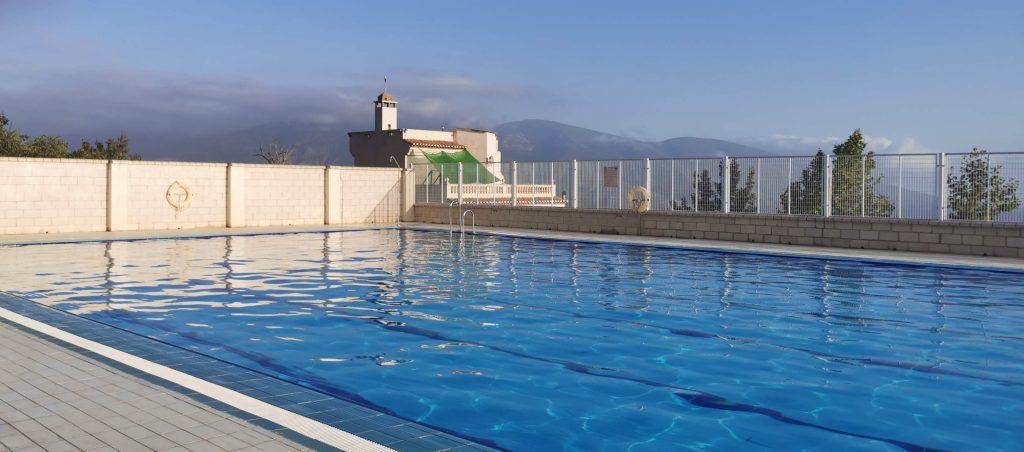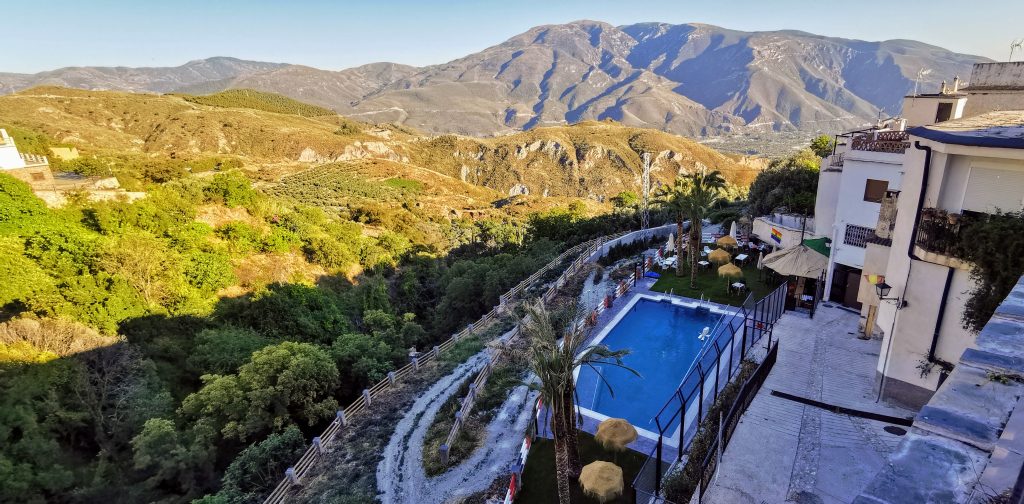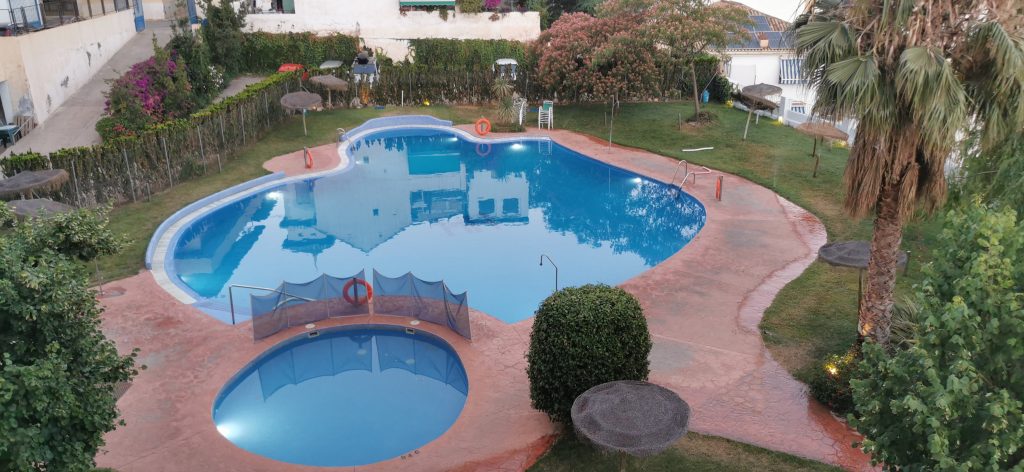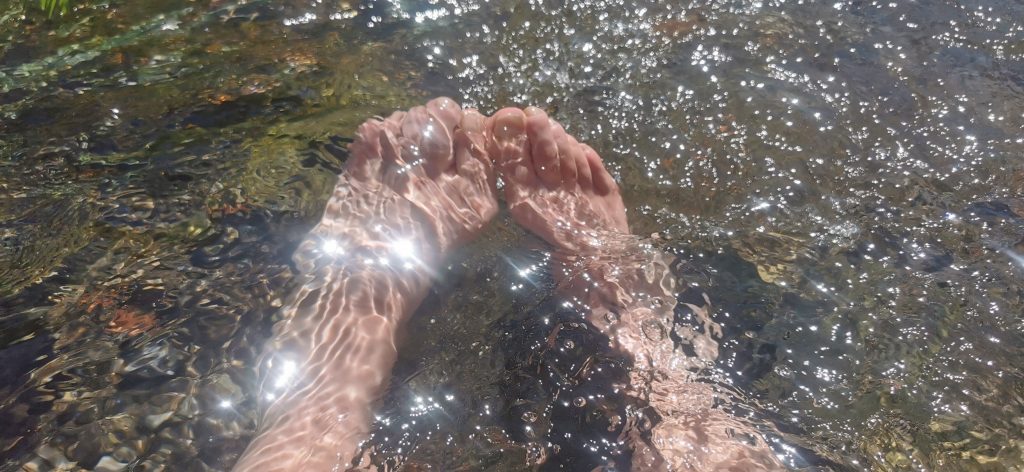ALTHOUGH the weather moving through mid-June looks slightly unstable (rain, thunderstorms), those ‘scorchio’ days are just round the corner. It’s the celebrated time of year when public swimming pools start opening. We can dust down our bikinis and beach towels from last year – or buy new ones.
If you don’t have your own pool in your back garden, urbanisation, or ‘campo’ (remember that pool maintenance is not for everyone!), there are many public swimming pools in La Alpujarra that enable you to bathe in a beautiful setting.
Municipal pools
Those visiting or residing in La Alpujarra are spoiled for choice with municipal pools. However, these generally open at the start of July, regardless of the weather conditions. Yes, even if it is 35C and people are sweltering, they await a fixed opening date..
One of the best options for “pool day” in the region is the Lanjarón ‘piscina municipal’, which allows residents to enter for just a Euro (visitors pay slightly more). Be aware that you must walk up a steep slope to reach the entrance, if you’re not driving. This is a well-maintained pool. No need to fear chemical imbalance, floating sticky plasters, or worse. Lanjarón municipal pool features sun loungers with shade, a ‘chiringuito’ serving cheap snacks and drinks, an infant pool, lifeguard and – if you get your timing right – a kids’ inflatable day with foam party.

Torvizcón also has a popular municipal pool, which has a ‘chiringuito’ and is conveniently close to Hotel Sahyl, which serves inexpensive food and drinks. The whole area has easy parking.
Another attractive municipal pool is in the witchy town of Soportújar, which is the most Googled destination in the area. Here, you can bathe then visit the themed attractions (be sure to avoid weekends and other peak times). However, we hear that the pool water can be “slightly cold” thanks to the elevation of the village at 640 meters.

Órgiva has a large municipal pool beside the ‘polideportivo’ (sports hall), and the ‘ayuntamiento’ always creates a natural dip pool under the Seven Eye Bridge in summer. Nicknamed ‘Órgiva Beach’, this is a significant local attraction. The town also has two campsite pools that allow paid-for public bathing in high season.
Campsite and hotel pools
Generally opening a handful of weeks before the municipal pools, campsite and hotel pools provide a welcome alternative to baking at home. You usually have to dine at the venue or pay an entry fee to use these privately-run ‘piscinas’. Entry can cost more than the municipal pool, but is frequently worth it for a pretty environment and flexibility. Not forgetting that delicious ‘menu del dia’ (fixed menu served on weekdays) that you can eat first.
Some of the best privately-run pools in La Alpujarra include Piscina Andalucia in Lanjarón, which opens from Saturday 15 June; the oddly-shaped but attractive pool at Pitres campsite; and the pool belonging to Camping Puerta de La Alpujarra (colloquially known as “the top camping”) in Órgiva. This is surrounded by astroturf and has shady spots for a siesta.

Natural pools
Although they’re not to everyone’s taste, fresh water pools let you bathe in nature, free of chlorine – and free of charge. OK, there might be a few fish, or frogs, but you can commune directly with the environment (man).
Some of the best natural dip pools, in summer, are below the Seven Eye Bridge in Órgiva, at the waterfall below Pampaneira, and under the bridge at Trevélez. The latter has extremely fresh water, as the town stands at 1,476 meters.
Just be aware, if you are easily shocked, that you might encounter nudists at natural dip pools – especially in Órgiva and reportedly at the hot springs at Santa Fe, Granada.

Swimming pool hints and tips
There are certain points to bear in mind when using public swimming pools in La Alpujarra, and anywhere else, for that matter.
Firstly, remember that the water is freshest when the pool has been newly filled in late June / early July. It is the SAME WATER all season, just with chemicals added to ensure that the correct balance is maintained. Once you have read a pool maintenance guide, you can never unread – just for example – the mathematical equation concerning the number of bathers and the percentage of urine in the pool (even though it has, you hope, been neutralised by chlorine).
Never bathe in a pool if the water level has dipped below the skimmers (those holes in the inside walls that are part of the filtration system, If it has fallen below this level, the pool isn’t filtering properly, if at all. Yuck. Also, beware of scuzzy-looking foam in the water or a very strong “chlorine smell”. Regardless of what many people think, this isn’t “just chlorine”: it is what forms when urine binds with chlorine to create a different chemical. These chloramines can sting your eyes and turn them red. Besides which, who wants to bathe in badly-neutralised water?
Always shower before jumping in the pool to remove your sweat and sun cream (that helps avoid creating the foamy scum!), never bathe if you have a stomach virus, and don’t pee in the pool. To avoid verrucas, always wear flip flops or sliders when walking around the vicinity, showers, and facilities block.
Above all, don’t open your mouth and swallow the water – especially if there are toddlers nearby wearing (or not wearing) swim nappies!
